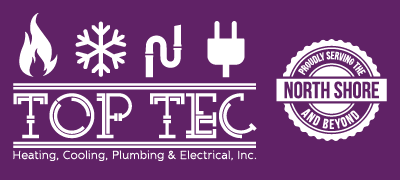
We spend a good majority of our time inside. As a matter of fact, the Environmental Protection Agency (EPA) has determined being indoors accounts for 90% of our time. However, the EPA also has determined your indoor air can be three to five times dirtier than outside your home.
That’s due to the fact our houses are tightly sealed to enhance energy efficiency. While this is fantastic for your utility costs, it’s not so good if you’re a part of the 40% of the population with respiratory allergies.
When outdoor ventilation is limited, pollutants including dust and volatile organic compounds (VOCs) may get trapped. As a consequence, these pollutants could irritate your allergies.
You can boost your indoor air quality with crisp air and usual cleaning and vacuuming. But if you’re still having problems with symptoms when you’re at your house, an air purifier may be able to help.
While it can’t remove pollutants that have settled on your furnishings or carpeting, it can help freshen the air moving throughout your house.
And air purification has also been scientifically confirmed to help reduce some allergic symptoms, according to the American College of Allergy, Asthma and Immunology. It can also be appropriate if you or someone in your household has lung trouble, such as emphysema or COPD.
There are two kinds, a portable air purifier or a whole-home air purifier. We’ll examine the differences so you can determine what’s right for your home.
Whole-House Air Purifier vs. Portable Air Purifiers
A portable air purifier is for a single room. A whole-house air purifier accompanies your heating and cooling unit to clean your entire home. Some kinds can clean by themselves when your home comfort unit isn’t running.
What’s the Best Air Purifier for Allergies?
Seek an option with a High Efficiency Particulate Air (HEPA) filter. HEPA filters are placed in hospitals and deliver the best filtration you can buy, as they trap 99.97% of particles in the air.
HEPA filters are even more beneficial when combined with an ultraviolet (UV) germicidal light. This mighty blend can wipe out dust, dander, pollen and mold, all of which are general allergens. For the best in air purification, evaluate a unit that also has a carbon-based filter to reduce household vapors.
Avoid buying an air purifier that makes ozone, which is the primary ingredient in smog. The EPA advises ozone may irritate respiratory troubles, even when emitted at low settings.
The Allergy and Asthma Foundation of America has compiled a list of questions to think over when buying an air purifier.
- What can this purifier extract from the air? What doesn’t it extract?
- What’s its clean air delivery rate? (A higher figure means air will be cleaned more rapidly.)
- How often does the filter or UV bulb need to be replaced]? Can I finish that by myself?
- How much do new filters or bulbs cost?
How to Decrease Seasonal Allergy Symptoms
Want to get the {top|most excellent|best] outcome from your new air purification equipment? The Mayo Clinic advises doing other measures to reduce your exposure to problems that can cause seasonal allergies.
- Stay inside and keep windows and doors closed when pollen counts are heightened.
- Have other family members trim the lawn or pull weeds, since these tasks can worsen symptoms. If you have to do these jobs on your own, you may want to consider using a pollen mask. You should also rinse off immediately and put on new clothes once you’re finished.
- Avoid stringing up laundry outdoors.
- Run the AC while at your house or while driving. Consider adding a high efficiency air filter in your residence’s heating and cooling system.
- Balance your home’s humidity levels with a whole-house dehumidifier.
- Hardwood, tile or linoleum are the best flooring kinds for reducing indoor allergens. If your house has carpet, add a HEPA filter on your vacuum cleaner.
Let Our Pros Handle Your Indoor Air Quality Needs
Want to move forward with getting a whole-house air purifier? Give our specialists a call at 847-362-0262 or contact us online to get an appointment. We’ll help you find the ideal unit for your residence and budget.
